Types Of Content For Local SEO
Local SEO content is a type of web content created to target a specific geographical area. Its sole purpose is to boost your visibility for local search queries, establish dominance in your target area, and attract local searchers to your website and store.
Why’s it important?
Let’s start with some facts. According to research from LocalIQ:
- Local search is rising as 97% of searchers turn to the web to learn more about a local company.
- Local SEO is highly effective in driving leads, as 28% of these searches lead to a purchase in 24 hours.
- People are willing to pay 22% more to a local company if they have a good reputation online
- 49% of businesses agree that local organic search produces the best marketing ROI
This means if you’re not optimizing your content for local keywords, you’re leaving a lot of money for your competitors who do. Also, not having optimized content can make you look less credible to your potential customers.
Another report from WhiteSpark shows that local content influences organic rankings— And higher rankings equals increased visibility:
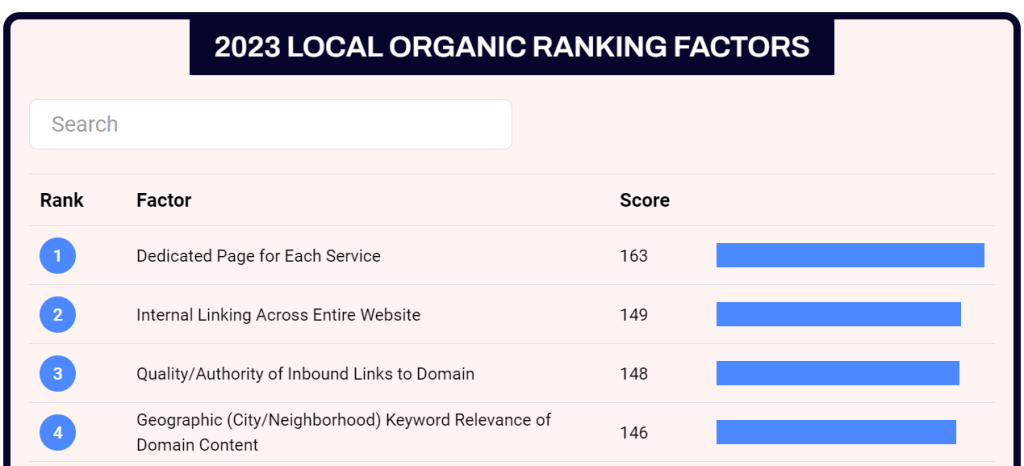
You’re likely to see an increase in conversions as well:
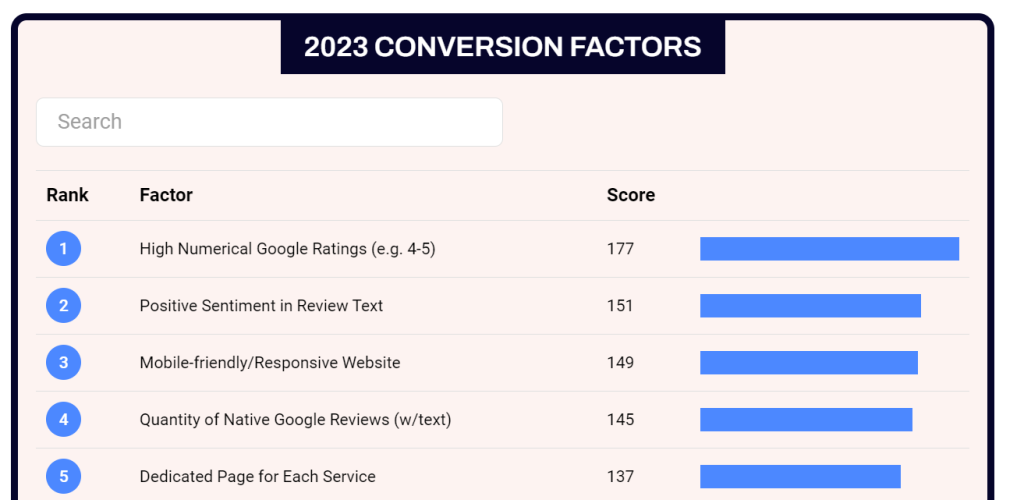
Other benefits are:
- It helps you attract in-person traffic to your site
- It allows you to rank for branded and geo-specific keywords
- Boosts your bottom-line revenue
- Increases your visibility on the search results for local search queries
Types of Content for Local SEO
Here are some content inspiration for your local SEO:
1. Location pages:
Location pages/local landing pages are web pages optimized to target people in a specific geographical area. They’re an excellent way to help prospects find your business location while giving them additional details about your product/service to incite a click-through/visit.
Location pages also help to improve your search performance. Instead of competing for difficult keywords in your industry – which are harder to rank for – you can target keywords containing geotags like ‘near me’ or ‘industry + [city name] keywords,’ which have a substantial search volume and are easier to rank for.
For example, ‘personal injury lawyer’ has a search volume of over 90k and a 78% keyword difficulty score, which means it takes a lot of work to rank for this keyword:

Conversely, adding a geotag to the keyword reduces the search volume and KD, which is easier to rank for:

These keywords are more effective as they attract high-intent traffic to your store/website.
If you’re thinking of how to structure your location pages, steal this inspiration from Ahrefs. Typically, a good location landing page covers details about the business and the service area, images, maps, and reviews from local customers.
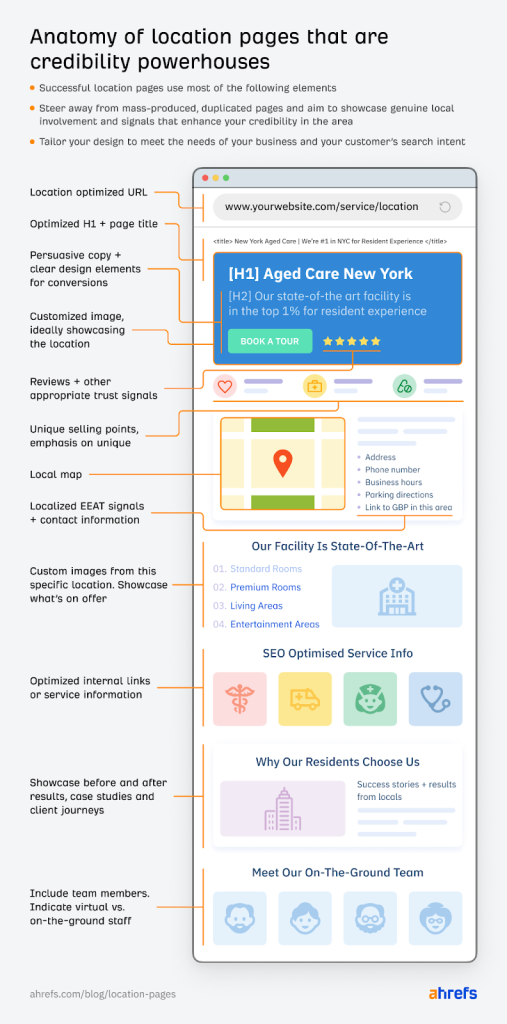
Thanks, Ahrefs!
There are four types of location pages:
- Regional/state landing pages:
These pages target searchers at a state or regional level. Because of their broader nature, they expand your targeting options beyond individual cities or neighborhoods and allow you to funnel traffic even from locations where you may or may not be physically located.
Franchise businesses, banks, legal firms, state government agencies, etc., use state pages to cater to audiences in this category.
State pages can also serve as a central hub for information about your services, locations, and operations within the state.
For context, see this example from an Injury and Real Estate legal firm in Florida. Their homepage is a state page targeting Florida and other cities within the state:

This is another example from Airbnb, Florida. AirBnB is a multi-location business. Showing their rental options across Florida allows them to attract guests looking for accommodations in different parts of Florida while targeting city-specific keywords for SEO purposes:
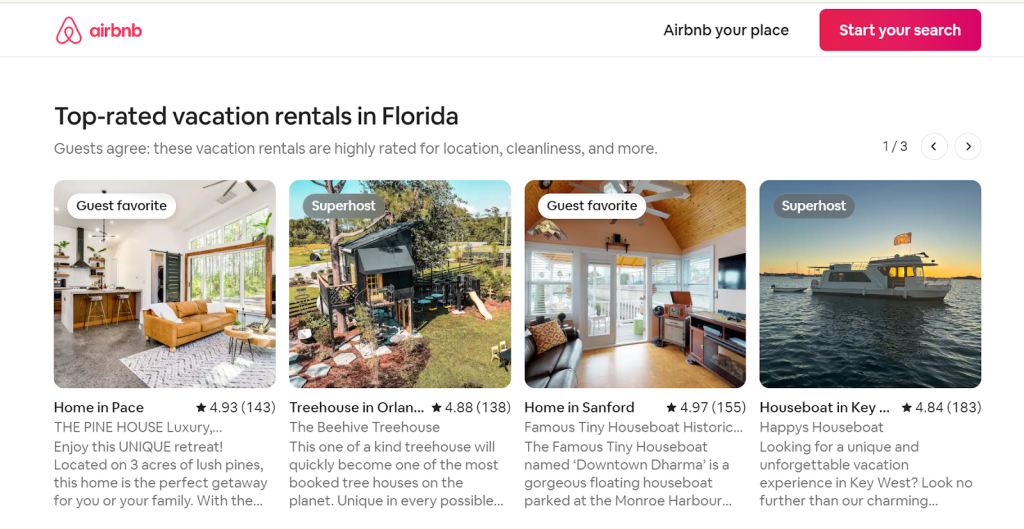
- City-specific pages
These types of web pages target specific cities, towns, zip codes, and other surrounding areas. Since they’re more specific, they allow you to rank organically for high-value keywords in every market you service.
But what if you already have a GMB profile serving that purpose?
City pages work well if you’re targeting multiple suburbs, especially if you don’t have a physical storefront in each area. For example, suppose you run a local bread shop in Westchester, Miami, and are targeting customers nearby. You likely don’t need a separate city page since your GBP already effectively covers your local presence.
However, if you’re an HVAC service company serving multiple locations with only one physical address, you’ll need to create separate city pages for each target location. You can’t create multiple GBPs without having multiple physical locations, so having city pages helps you target and rank for local search queries in each area.
See an example from Jeni’s Splendid Ice Cream city page for downtown Atlanta:

- Neighborhood pages
Neighborhood pages are even more targeted than city and state pages. They are web pages designed to target searchers looking for specific, hyper-local information about distinct areas within a larger city, such as Parkdale in Toronto, Ontario, Canada. Because of their high specificity, they’re perfect pages to rank for [near me] searches.
See a perfect example from Paschal, an HVAC company serving Arkansas, Missouri, and Texas, for Shadow Valley. The copy highlights places and landmarks around Shadow Valley that will resonate with customers from this location:
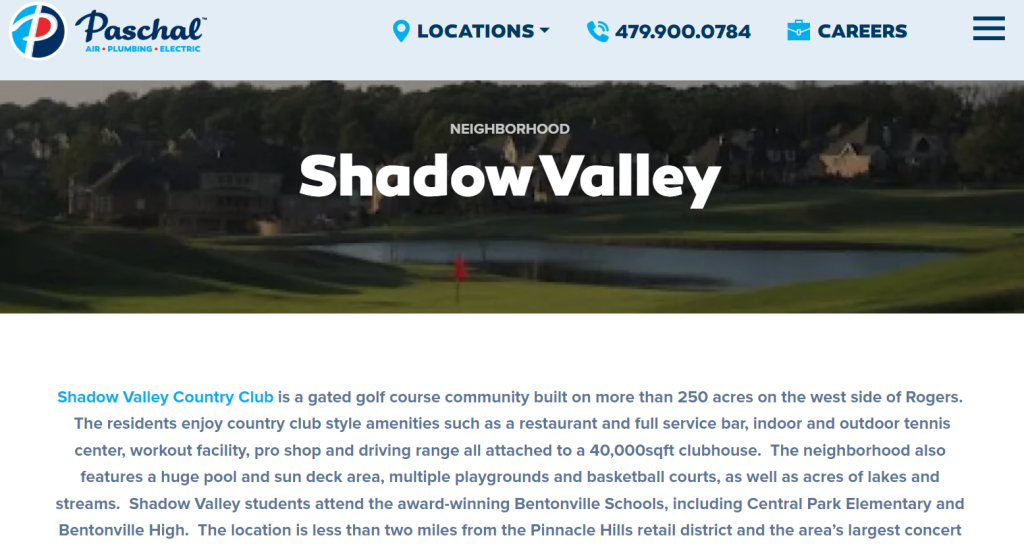
They also included specific discounts for their services, making their offerings appealing to the residents:
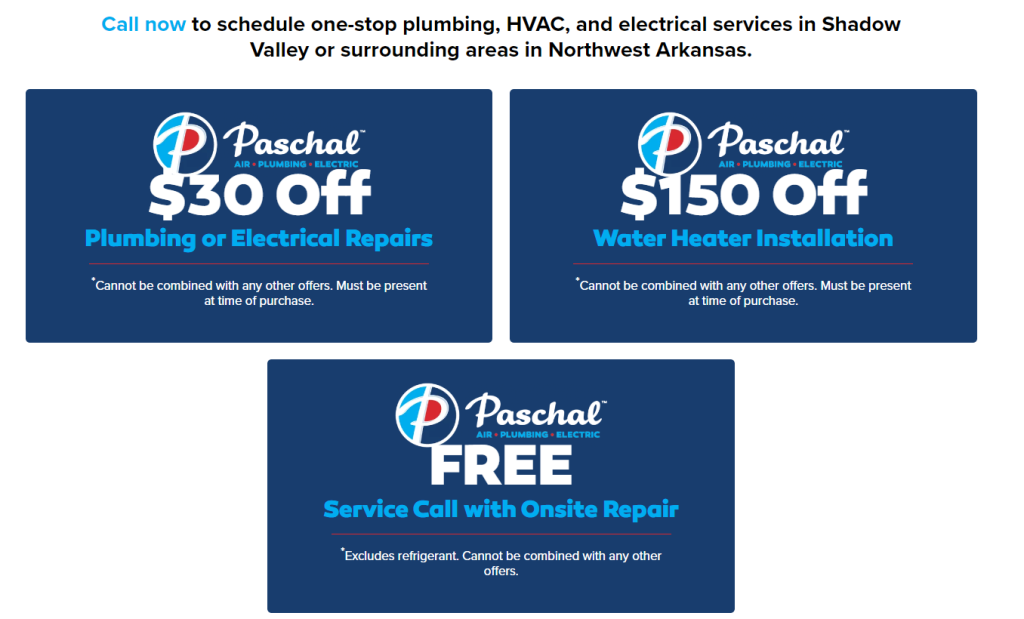
2. Service Area Pages
Service area pages (or SAPs) are web pages designed for service area businesses (SABs) – companies that offer services directly at customer locations and do not have a physical storefront for customers to visit. This includes plumbers, landscapers, delivery services, HVAC technicians, etc.
For example, a plumber serving customers in Miami can create separate neighborhood pages for areas like Coral Gables, South Beach, and Little Havana. Each page could contain the specific services offered, testimonials from customers within the region, and other landmarks relevant to that neighborhood.
This is an excellent example from OnTime Home Services showing all their service areas outside their primary location:
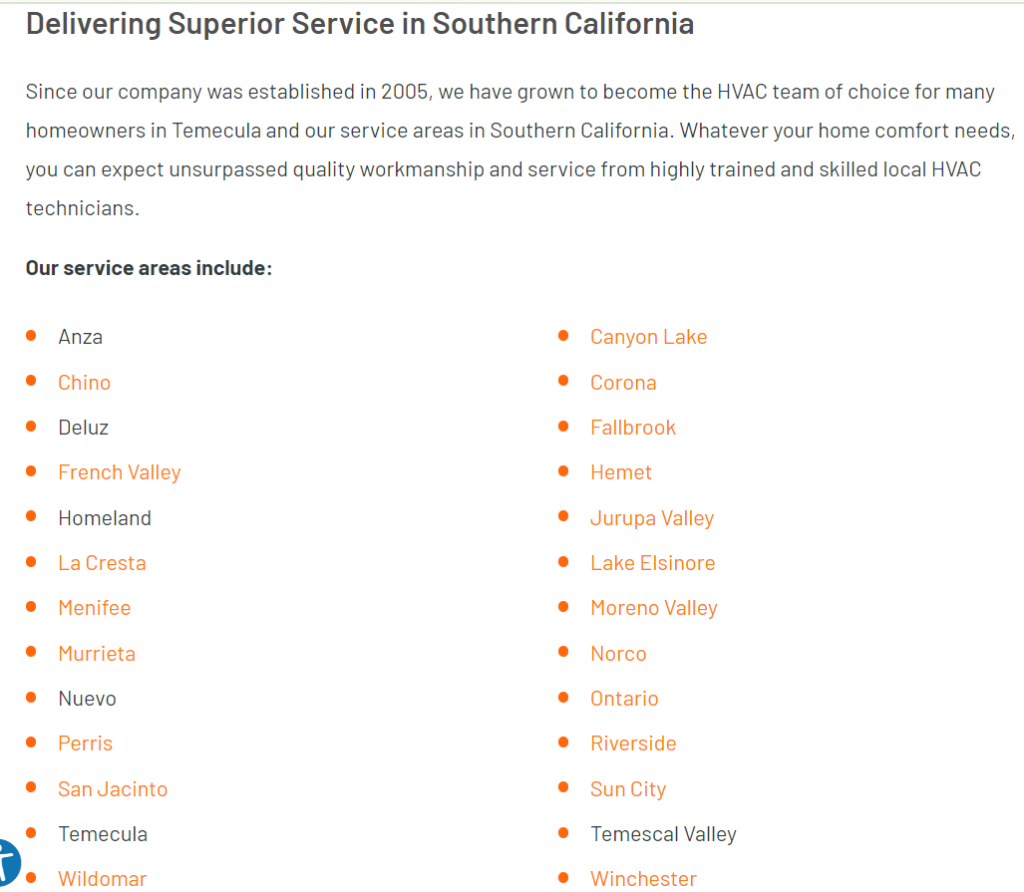
Who’s this for? Service area pages are perfect for service area businesses (SABs) and hybrid businesses—those that don’t have permanent on-site signage, such as a local restaurant that delivers food outside its locality.
3. Testimonial and Case Study Pages
Testimonials and case studies pages are perfect for showing your credibility in delivering services in the target area. The former features reviews from past customers, and the latter showcases projects you’ve undertaken in each service location.
They communicate trust to your prospects and, as a result, can influence their buying decisions.
For best results, research shows that having high-value ratings/reviews from reputable third-party sites is more effective in boosting your local search rankings and conversions:

See this example from DHC Laws. They integrated reviews from Google, Facebook, Yelp and Avvo:

Also, consider having reviews for each if you have multiple location pages. This is because customers want to see reviews relevant to their location. See this example from Kidd Roofing:
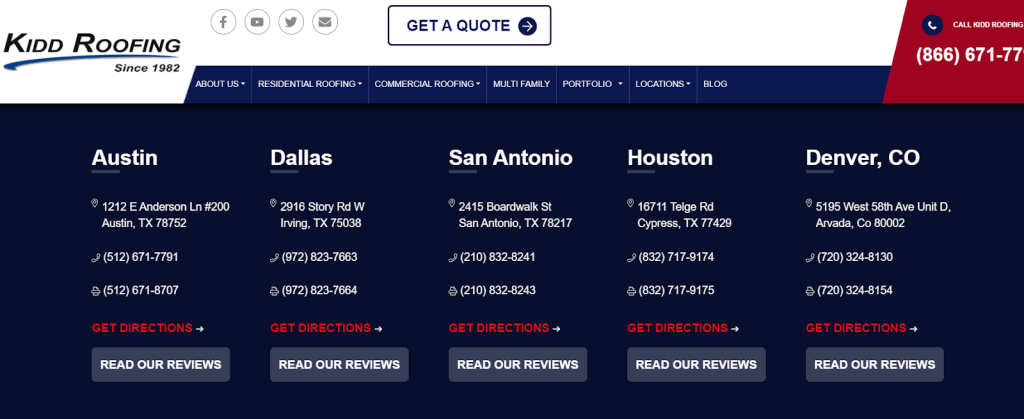
Case studies are even more effective than testimonials. Combined with reviews, they are powerful tools for showcasing your business’s expertise and trustworthiness.
For example, if you’re a local roofing company, showing before-and-after photos alongside customer testimonials can encourage prospects to visit/contact your business.
4. FAQ (frequently asked questions) pages:
As the name suggests, these pages are dedicated to answering common customer queries. They are in question-answer format, so they’re likely to rank for informational or navigational search queries in the search results.
I love this example from McDonalds:
5. Blog posts:
If you’re having second guesses about having a blog post for your local business, here’s a confirmation that you should. It’s not enough to have optimized product/service pages. Blogging can help you:
- Gain a competitive advantage in your local market and the SERPs
- Target and rank for local and industry-related keywords,
- Increase your trustworthiness and credibility rating in the eyes of your prospects and SEO bots
- Build your ‘Domain Authority’ by attracting relevant backlinks from reputable sites
- Connect and build relationships with your customers
Also, it helps you break away from the promotional ‘location pages’ to provide valuable answers that address your customer concerns. Here are some inspiration for topics to cover in your blog section:
- How to guides
- Industry/local news
- A local event/news
- Case studies and success stories.
- Local business collaborations
- Seasonal and holiday-themed content
See this example from Houston Roofing:
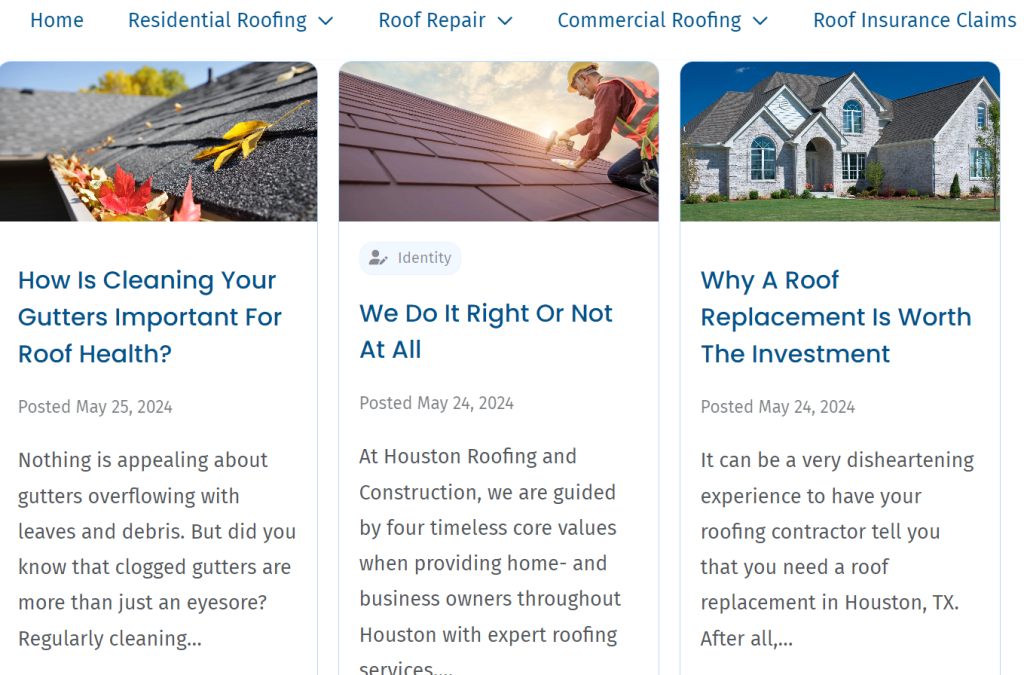
6. GBP content:
Google allows you to add text to your business profile, up to 1500 characters. This text shows up alongside all other information on your business profile. There are many advantages to having content on your GBP:
- It allows you to share updates such as special offers, local events, news, and sales with visitors searching for your product/service.
- Advertising seasonal promos are a great way to capture prospects’ attention before they check out the competitors.
- It increases your targeting options. With GBP posts, you can include relevant local keywords on your profile to increase your chances of ranking for the search terms.
The good thing is that GBP content can be in varying formats: Photos, reviews, updates, offers, events, and FAQs. It can even be a combination of any. For instance, See how Sweet & Beans combined images and text to showcase their special offer:

Read more: How to rank your Google Business profile.
How to create a content plan for your local SEO
Now that you know the types of content needed for your local business, here’s how to create a content plan:
1. Understand your audience:
Who are your customers? What are their search patterns (and queries)? Before creating a content plan, you must understand who you’re writing for. Without this, you can’t satisfy their search intent. Also, you’ll publish content they don’t want to read.
An excellent way to do this is to identify the critical characteristics of your current customers. Run a survey to collect more information about them, such as how they perceive your product/service and what kind of information they’d love you to share if you own a physical store, better. You can easily ask them in person in exchange for a coupon code or gift.
Once you’ve gathered this data, segment them based on their journey through the marketing funnel. You can also create personas to help you create content that fits each group’s needs.
For example:
Group A: Customers in the awareness stage are searching for the best and most reliable solution to their problems. They may use search terms like ‘how to find a good dentist in [your city]. ‘
Content ideas: An informative guide on how to find a good dentist or listicles highlighting the top practitioners in your city.
Group B: Customers are in the consideration stage. They know what they want but need more information to ease their decision-making. They will likely use search terms like ‘Affordable plumbing services in [your city], the best bakery shops [near me].’
Content ideas: Create a case study and (or) customer review page to showcase your expertise and client satisfaction after buying your product or using your service.
See this example from Southern Premier Roofing. They created a pillar page on the different types of roofing available to drive awareness:
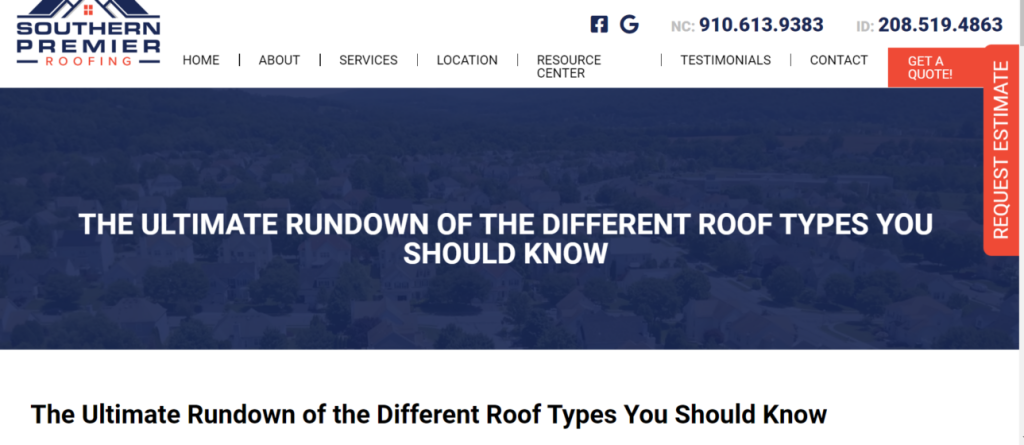
2. Brainstorm a list of topics:
Now that you know who you’re targeting, their intent, and their context, you can start brainstorming the topics for which you’d like to be found. This is called your core topic area. It’ll guide your content creation process, including keyword research and content format.
Technically, you’d want to be known as your locality’s best and go-to option. So, start with a broad search term for your service/product and add tags your customers will likely use in their search.
For example:
- Best restaurants in [city name],
- Restaurants near [a famous landmark],
- Live music restaurant near me, etc.
Google Search Console can give you insights into the top queries for which you’re ranking. This can give you an idea of what to focus on:
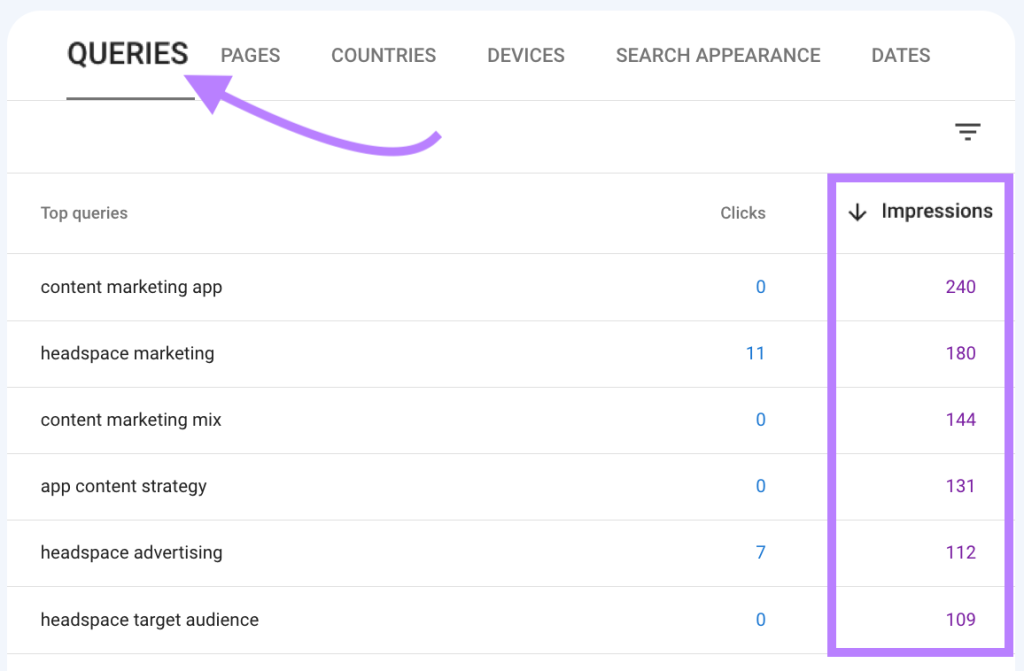
Sometimes, your customers might not use direct search terms. Instead, they may search based on their pain points or needs. In this case, use a third-party keyword tool to find topics related to your product/service. Ahrefs has a ‘Keywords Explorer’ feature for this purpose.
See the results to uncover plumbing-related search terms:
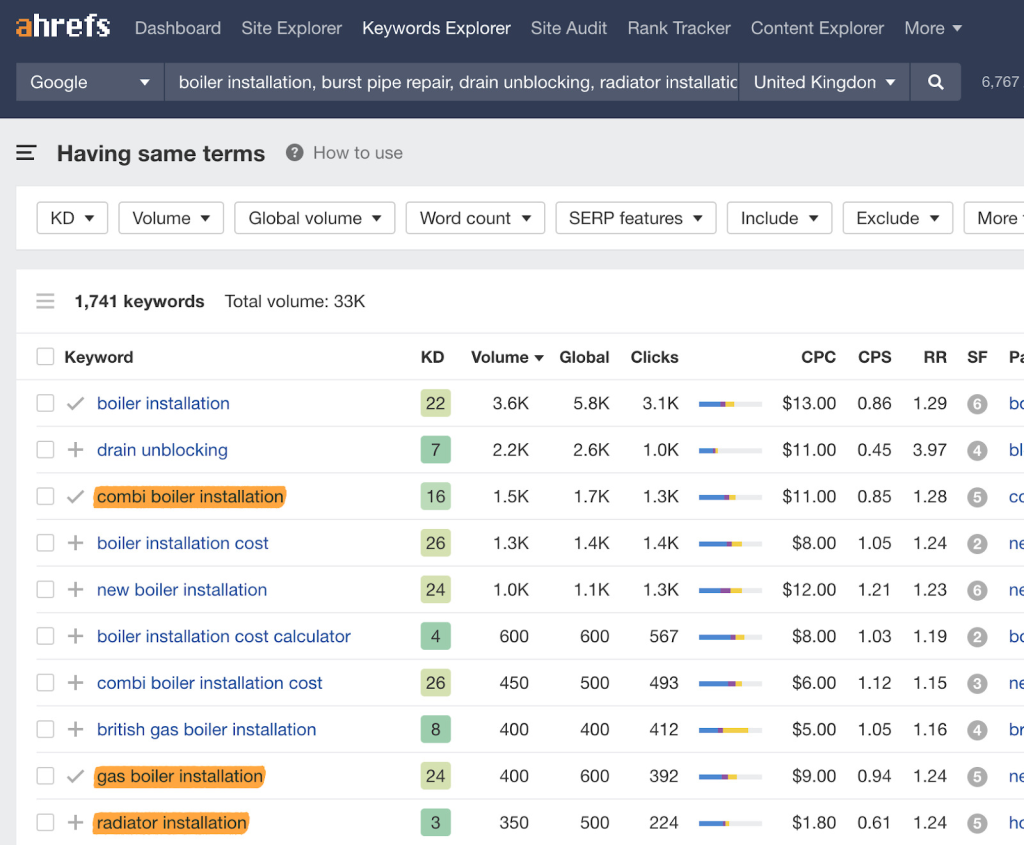
3. Conduct keyword research:
The next step is to build your keyword list. Use keyword research tools like Google Keyword Planner, Ahrefs, or Semrush to elaborate on your keyword list. These tools provide insights into each keyword, search volume, difficulty, and intent. See the results for ‘mechanic’ in New York on Semrush:
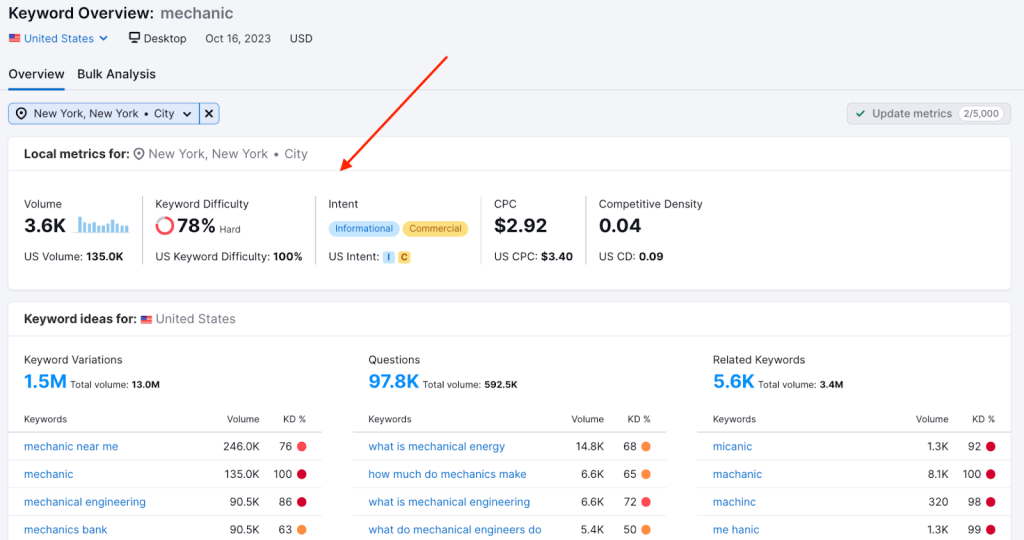
Take a look at the ‘Questions’ section. While the topics listed do not serve local intent (since they have no local tags), they can still help create content that addresses common customer pain points.
For instance, if you’re writing content on emergency automobile repair services, you can introduce a local tag in the content like ‘cost of hiring an emergency automobile repair in [your city].’ This way, you also attract traffic relevant to your target market.
Read more: How to choose the right keywords for SEO.
4. Find gaps in your competitor’s strategy:
If you’re stuck on what else to include in your content strategy, check out your competitors. Start with the type of content they’re publishing (blogs, location pages, FAQ pages, etc.). What topics are they covering? How did they structure their content? If they’re a multi-location business, you also want to check out how they create blogs/guides for each service area.
How?
SEO tools can help you gain insights into your competitor’s local content strategy. Ahrefs has a Site Explorer tool that enables you to see the pages bringing your competitors the most traffic:
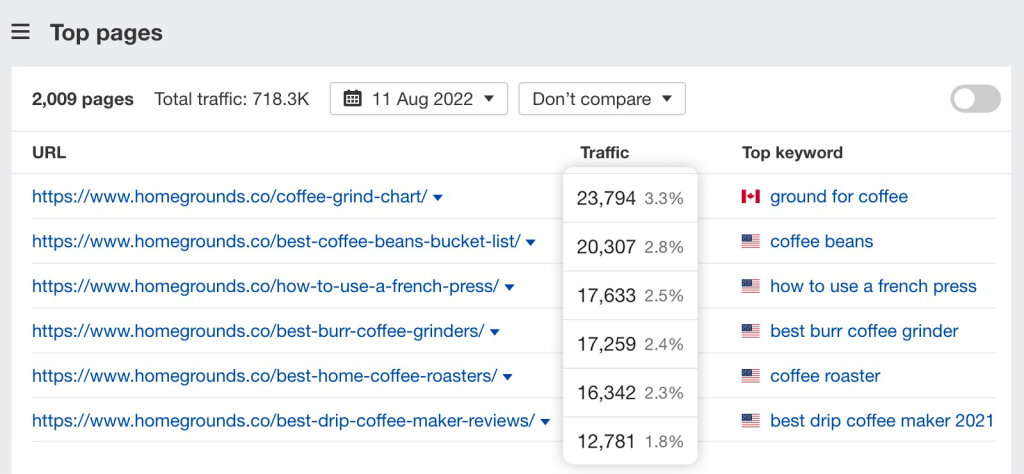
There’s also a Content Gap feature that helps you find keywords they’re ranking for and you are not. This can help you find more keyword opportunities to target:
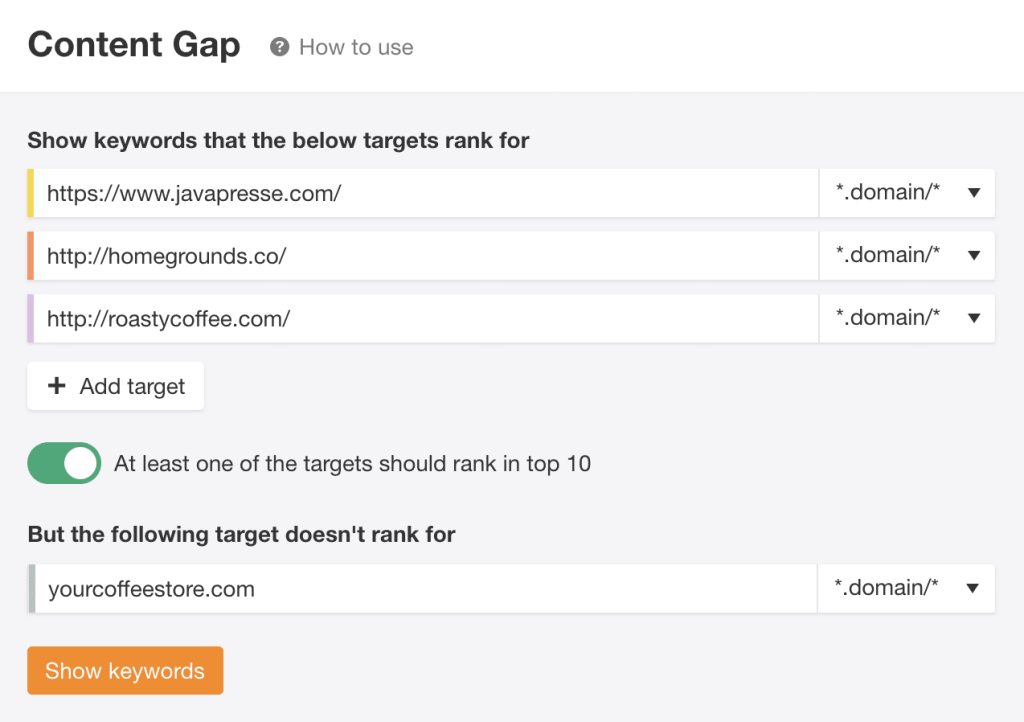
Read more: How to conduct SEO competitor analysis.
5. Create a content plan
Now that you’re armed with the right keywords, it’s time to build a customer-centric content plan around your local keywords.
Start by organizing your keywords based on their potential, position in the funnel, priority, and search volume. This will help you know which keywords to focus on, the content gaps to fill, and the web pages to re-optimize for higher conversions.
For context, see an easy way to organize your keywords in a spreadsheet:

Following this strategy might get overwhelming if you’re serving several locations at once. You’ll likely experience duplicate content issues while creating content for the individual locations.
To avoid this, create a content template that can be mirrored across all your target markets. Distinguish one from the other by adding nuances unique to each location. This can be testimonials, landmarks, or even language.
See how Smith and Wollensky do it:
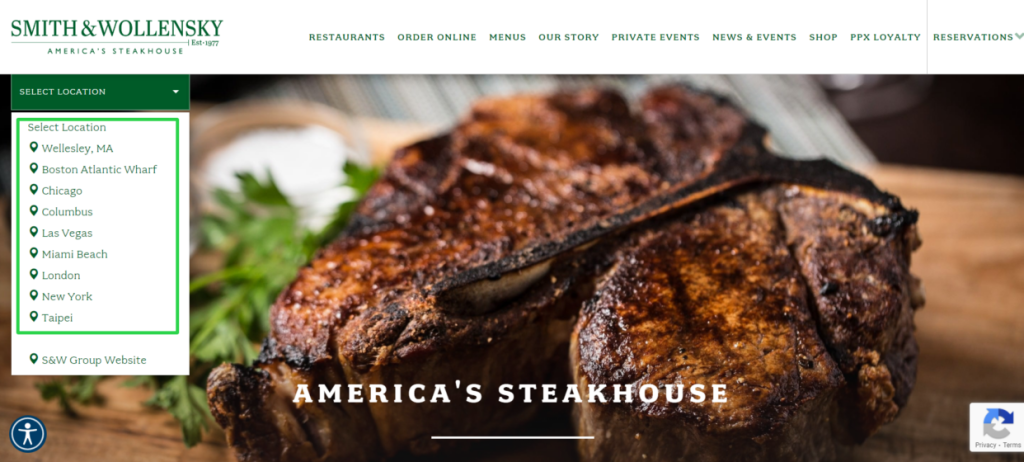
Once you click on each location, you’ll see a different image that matches the local area:
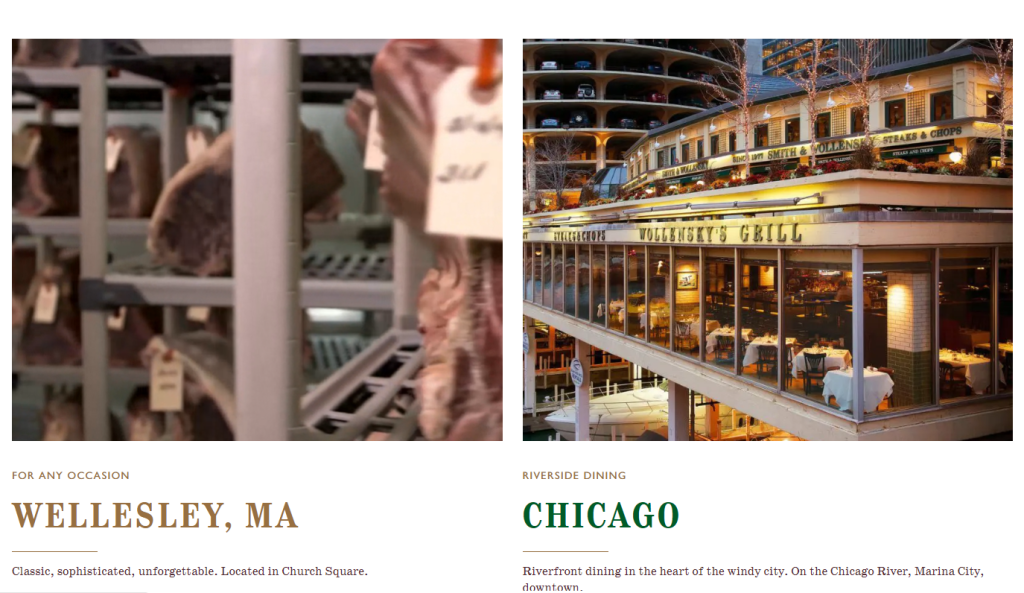
6. Have a promotional strategy in place
It’s not enough to have an excellent content plan. You also need to devise a means of distributing your content. This is because the customer journey isn’t always linear.
Sometimes, they search for the best restaurant on their social media pages, and if you’re not promoting your content, you’re likely to miss out on sales.
Here’s how to do it:
- Partner with other complementary local businesses in your area to expand your reach.
- Encourage customers to create and share social media posts whenever they visit your store or use your service. You can even host social media contests to increase participation.
- Collaborate with local influencers that align with your brand to amplify your content.
- Sponsor local events such as festivals or games.
- Guest posts on top publications to increase your brand awareness.
- Feature testimonials of customers who have enjoyed your products or services on your key pages and social media profiles.
Conclusion: Should you create local SEO content?
Yes! We’ve worked with several local businesses and seen how it increases brand local visibility, traffic, and sales. Here’s one of the many cases we handled:
Absolute Refrigeration is a leading HVAC service provider in Lubbock, Texas. Although they’ve been in the business for over 18 years, they had no record to show online because of a poorly optimized digital presence. Their last agency also contributed to this, making it challenging to convince them to give us a shot. But they did!
Instead of creating content immediately, we conducted an audit to understand why they weren’t ranking despite being in the HVAC industry for a long time. Then, we claimed and optimized their GBP for better visibility.
We also conducted keyword research to identify high-intent keywords with low difficulty for which they could easily rank. Our SEO strategy team developed a matching content plan that targets these keywords for even more visibility.
At the end of the campaign, they saw a 580% increase in leads and calls, and they had to hire extra hands to answer them! They also saw a 155% increase in organic traffic and 723% in organic conversions.
Why wait? Contact us today for a free strategy session.
